What makes a great character? We tend to think of the figures whose outlines are carefully filled in over hundreds of pages of a novel or dozens of hours of a prestige series, until we understand them in all their psychological complexity. But there are many ways for a character to be important.
Some populate our shared cultural imagination, distilling an idea, an era, or a distinct variety of Homo sapiens down to one shared reference point. (Are you a Scrooge, a Pollyanna, or something more quixotic?) Others change the way we perceive whole communities or histories, or allow swaths of humanity to, for the first time, see themselves reflected clearly in popular culture. They can be protagonists, antagonists, or personalities on the margins. (Who has had the more enduring afterlife, Peter Gibbons or Lumbergh?) Sometimes their primary impact is on the culture business as much as on the culture itself: They inspire new archetypes, blaze trails for new genres, or milk enough cash out of customers to greenlight global cross-platform media franchises. Others reshape the real world, whether according to the artist’s intent or as a Frankenstein’s monster that slips loose from the creator’s grasp. There are even some who aren’t white male antiheroes.
We polled critics and other culture obsessives from Slate and beyond to assemble an enormous master list of influential characters. They were animated and live-action, wizard and Muggle, human and avian, fictional and based on actual persons, living and dead. They came from movies, books, TV series, video games, tweets, podcasts, comics, songs, and (in a surprise to us) more than one musical. Reflecting our franchise-driven time, many of them came from many of those media at once. The only rule was that they must have originated in a work of culture sometime in the past quarter-century, which meant no Simpsons or hobbits or diner-dwelling New Yorkers who argue about nothing. Then we ruthlessly winnowed down the list to the most crucial of those characters, the ones who have left an outsize mark on our planet circa 2019, to assemble this new pantheon. If you’re worried that we forgot your favorite, let us reassure you: We didn’t. They just weren’t important enough.
25. Thomas Cromwell, from Wolf Hall (2009) and Bring Up the Bodies (2012)
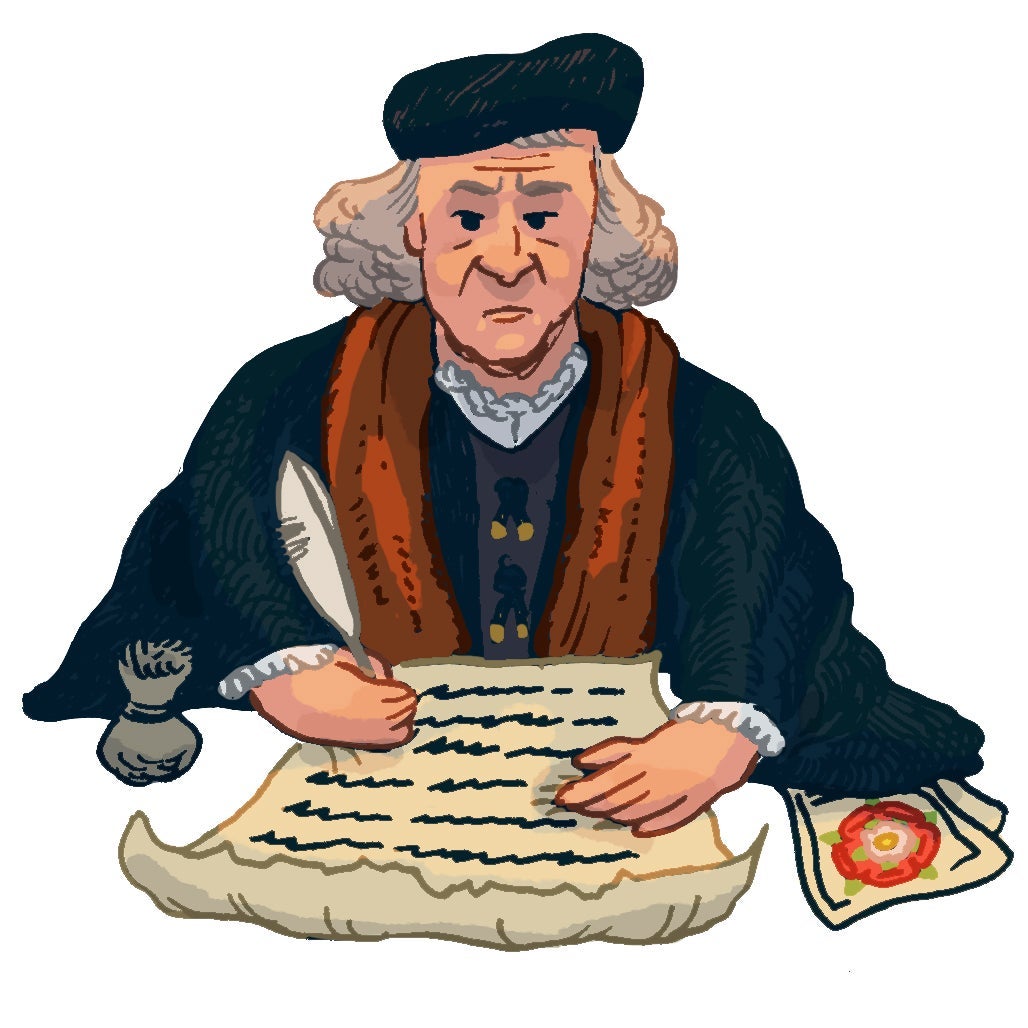
He knows your secrets. He’s 11 moves ahead of you on the chessboard. He “can draft a contract, train a falcon, draw a map, stop a street fight, furnish a house, and fix a jury.” Hilary Mantel’s duo of Tudor novels (soon to be a trilogy), the crowning literary achievement of the past quarter-century, reimagines Cromwell from the blunt villain of Robert Bolt’s A Man for All Seasons into an expert fixer, a macher, the shadowy manipulator emerging into the light. Mark Rylance’s soulful, watchful portrayal in the 2015 BBC version is the rare TV performance that adds dimension to a character; his Cromwell is Keyser Söze with a conscience, Michael Clayton without the gambling problem, Steve Bannon but actually as smart as he thinks he is. Together, Mantel and Rylance have created the enduring archetype of this modern vision of the exercise of power, the character every well-read person will remember when they feel the tug of the unseen puppet master’s strings upon their fate.
—Dan Kois
24. The Babadook, from The Babadook (2014)
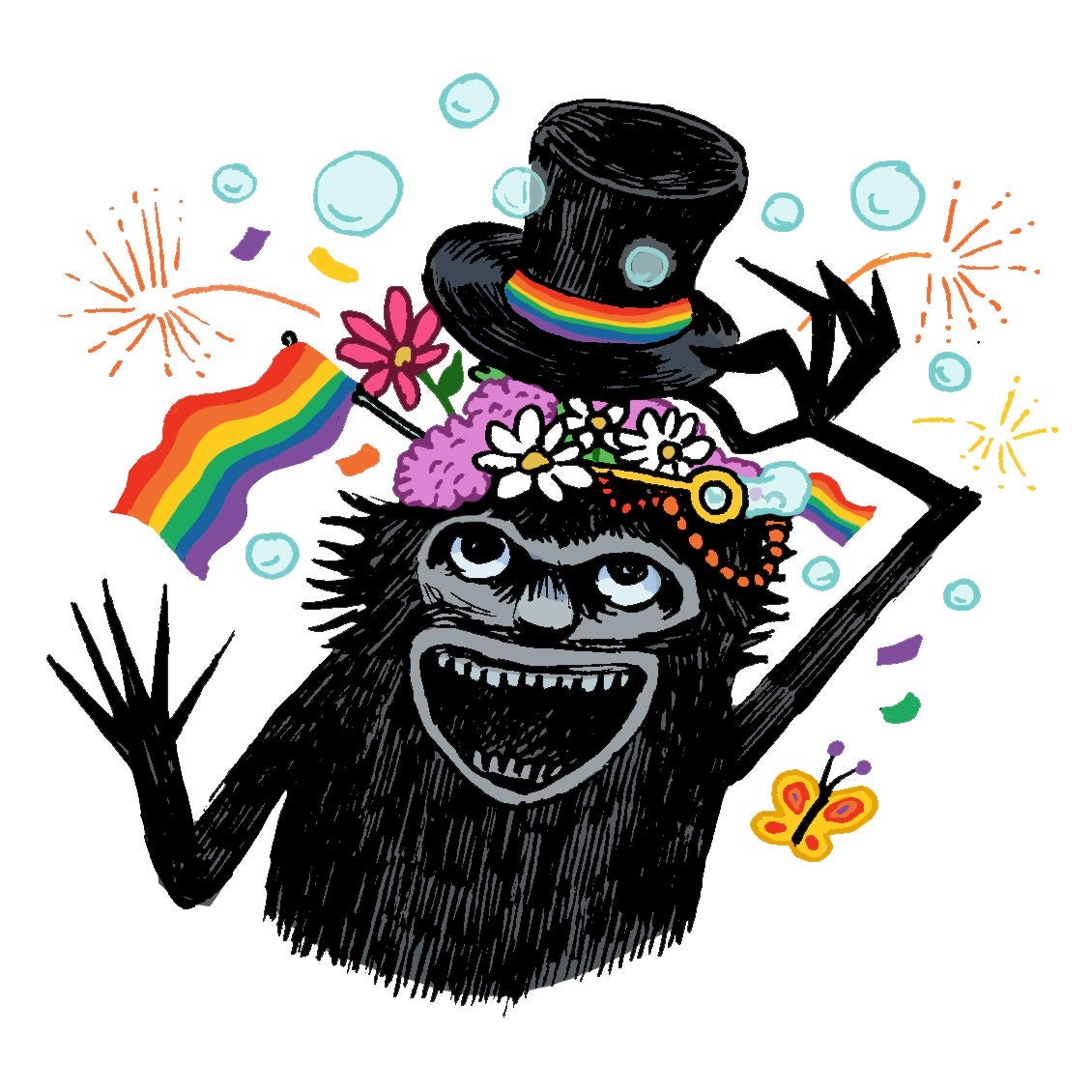
No recent villain has left us so shook
As Jennifer Kent’s Mister Babadook.
Horror’s brand new golden age is fact.
But the monsters are all so very abstract.
Take It Follows, or Paranormal Activity:
In each, the spook’s only name is “The Entity.”
In Get Out, no one dude’s most menace-y;
Really the foe is white supremacy.
But here one soul scares the whole human race—
And he’s more than a mask. (Sorry, Ghostface.)
Even The Exorcist’s William Friedkin
Said no film ever had him so freakin’.
Sure, he’s a symbol, for grief and trauma;
But fleshed out as one bloke who lives for the drama
With a stovepipe hat—yass, what a lewk!
Horror’s great new figure? The Babadook.
—Forrest Wickman
23. Mindy Lahiri, from The Mindy Project (2012)

Greater representation of minority groups tends to happen in phases: First come the role models, then the flawed characters, and finally the antiheroes. Mindy Kaling skipped a couple of steps when she created Mindy Lahiri, her alter ego on The Mindy Project. The first sitcom led by an Indian American woman, the series could be miserably uneven, but it never lost sight of who Dr. Lahiri was: a romantic heroine who, as a desi woman bigger than a size 0 with a taste for retina-searingly bright colors, looked like few others in pop culture—and whose bubbly, pathological narcissism somehow made her profoundly relatable. (The character is a constellation of Kaling’s influences: her OB-GYN mother, author Jhumpa Lahiri, and The Office’s Michael Scott.) First appearing in 2012, Mindy Lahiri predates the Asian American boom currently bursting across our screens, but she was so ahead of her time it might be years before any other Asian American character catches up to her complexities.
—Inkoo Kang
22. Milkshake Duck, from the tweet by @pixelatedboat (2016)

It typically takes an artist thousands of words, hours of screen time, or buckets of paint to craft a zeitgeist-defining character. On June 12, 2016, comedian Ben Ward, aka @pixelatedboat, did it in a single tweet:
Milkshake Duck, Ward’s imagined character representing how swiftly the internet can make a star and then unmask them as reprehensible, isn’t as fleshed out as some of Twitter’s other characters. The long-running account @dril, for instance, has a more complicated persona than Milkshake Duck, about whom little is known beyond his taste in beverages and his off-the-charts racism. But the shape of the Milkshake Duck saga is all too familiar to anyone who is Extremely, or even Moderately, Online. So many people have skyrocketed to viral fame, fueled by social media’s insatiable hunger for feel-good stories, only to be brought down by outrage over their anti-Semitic, misogynistic, or pregnancy porn–laden pasts, that it’s no wonder Milkshake Duck made Oxford Dictionaries’ shortlist for 2017’s Word of the Year. And while the bird is not the only recent pop culture figure to enter the lexicon—Eminem’s “Stan,” for example, gave us a noun and a verb—no other character may have better or more usefully distilled the life cycles of our internet-driven era. The frappé-loving waterfowl is practically our Hero With a Thousand Faces.
—Matthew Dessem
21. Sarah Koenig, from Serial (2014)
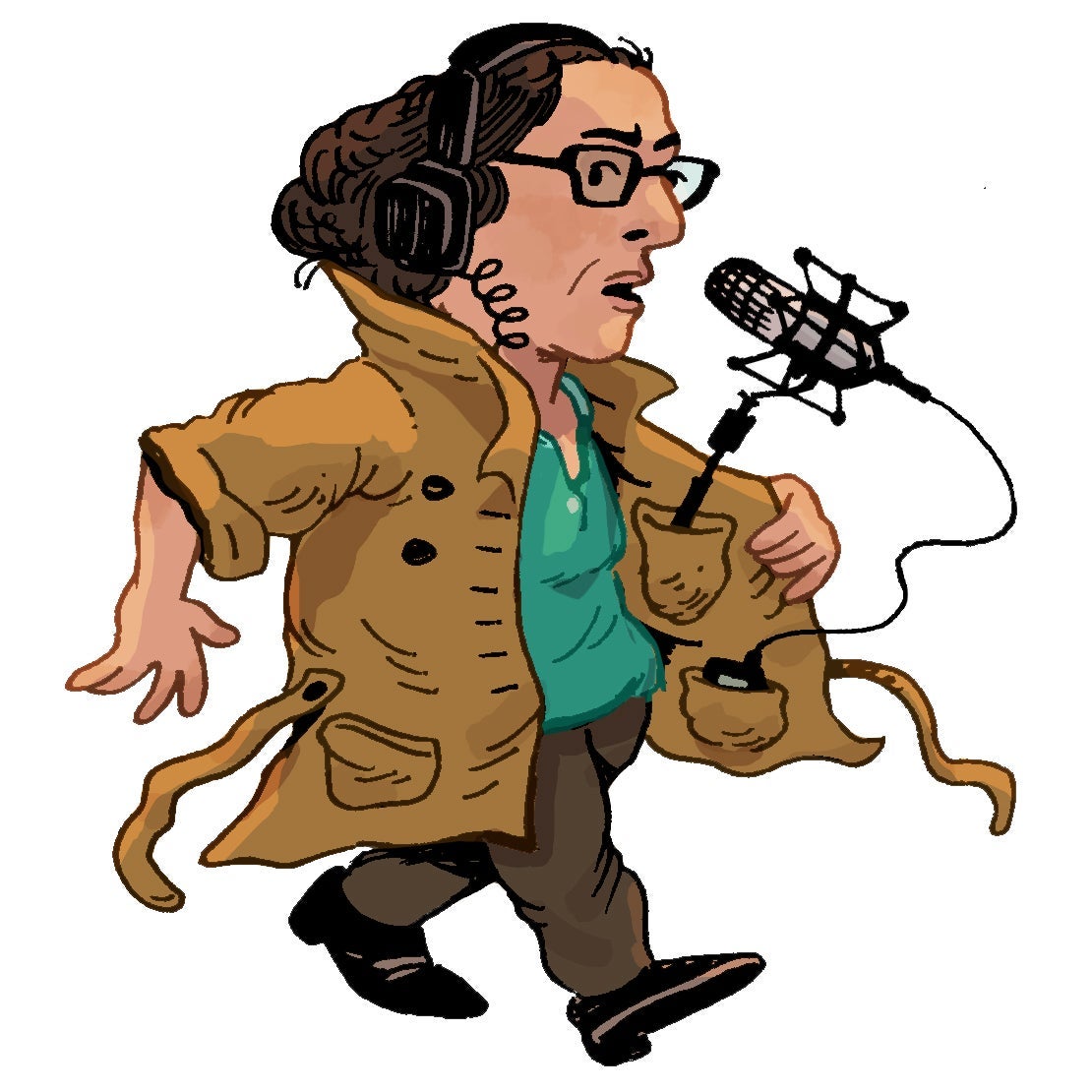
Who among us does not secretly believe that we would make a great detective? Yes, the appeal of this breakthrough podcast came from its unfolding nature, the sensation that each new episode might yield the one bit of information that, scrutinized by the right intellect, could clear or condemn Adnan Syed of the 1999 murder of his high school girlfriend, Hae Min Lee. But much of it also came from the peculiar intimacy of the podcast medium, with its voices that, to the earbud-wearing smartphone listener, feel like they’re coming from inside your own head. Sarah Koenig was both the first great star and first great character of a fledgling medium, an amateur PI who became her listeners’ second self. She was Sherlock Holmes to your Watson—or, depending on how highly you rank your deductive powers, vice versa. Her search for the truth merged with your own, and her voice was the one certainty in a case swimming with shifting evidence, controversy, and unanswered questions. In the end, it was her verdict, not any court’s, that mattered most.
—Laura Miller
20. Thomas Jefferson, from Hamilton (2015)
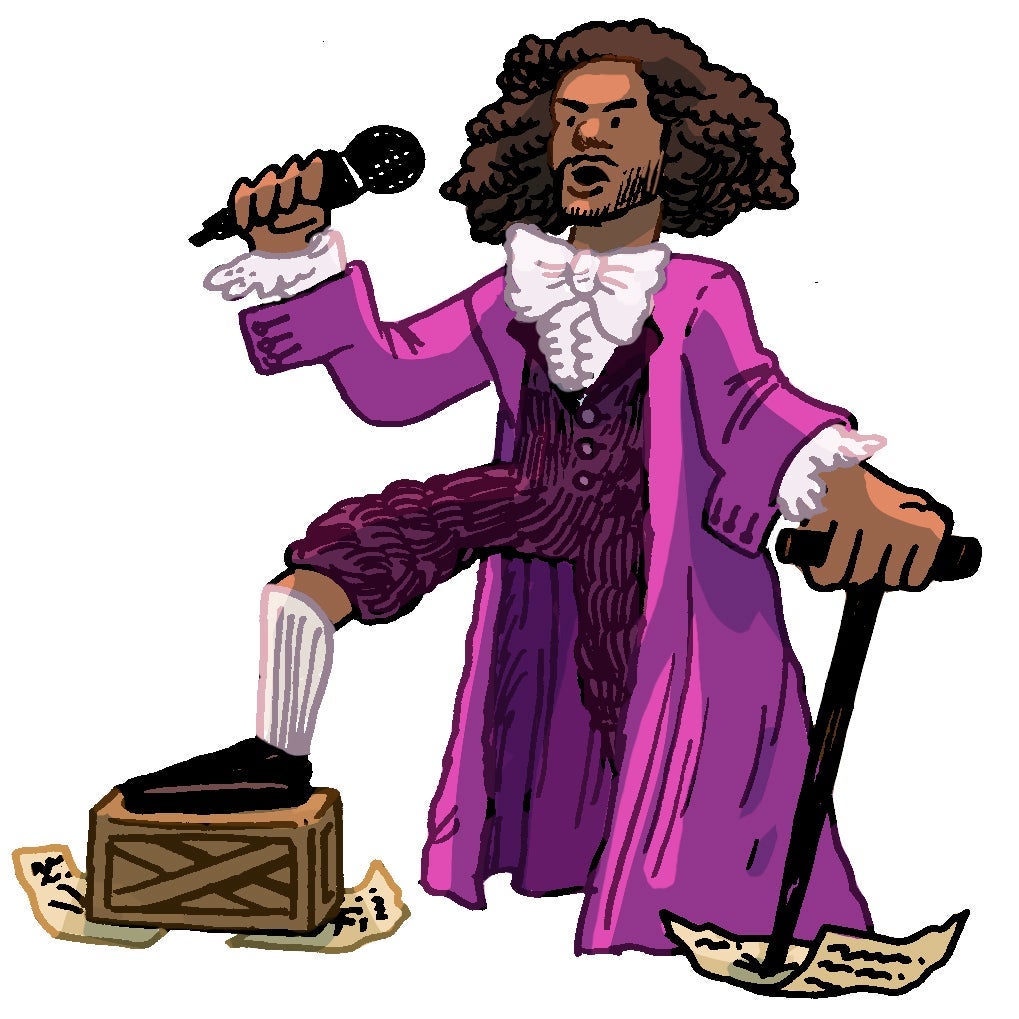
While Lin-Manuel Miranda’s Pulitzer Prize–winning, Billboard chart–topping musical may have helped restore its title character’s place on the $10 bill and in many Americans’ hearts, it threatens to make an even more dramatic impact on the way we remember his nemesis in George Washington’s Cabinet, redefining Jefferson in the cultural imagination as a villain.
Onstage, Daveed Diggs entered Hamilton’s second act by literally upstaging his co-stars, descending a palatial staircase to survey the nation that’s been formed in his absence, but Lin-Manuel Miranda’s common-born upstart sees through his swagger. He may have authored a “real nice Declaration,” but Jefferson hardly embodies the equality he so eloquently espouses: As Hamilton points out during their ideological rap battle, he’s a slave owner who was “off getting high with the French” while soldiers were dying on American soil. Miranda doesn’t scoff at Jefferson’s ideals, and in the end, Hamilton chooses his high-minded hypocrisy over Aaron Burr’s unprincipled self-advancement. But the portrayal of one of the country’s Founding Fathers as a bully and a braggart who sees no apparent contradiction in proclaiming all men equal while treating some as property is Hamilton’s most enduring reframing of American history. It may not blow Jefferson off the face of Mount Rushmore, but it’s beginning to chip away at it: Polls show that Americans are less likely to see Jefferson favorably than they were a decade ago, with pollsters mentioning the musical as a possible influence. While historians have long taught Jefferson as the populist and Hamilton as the elitist, millions of theatergoers will now think it was the opposite.
—Sam Adams
19. The Rock, from the WWE (1996)
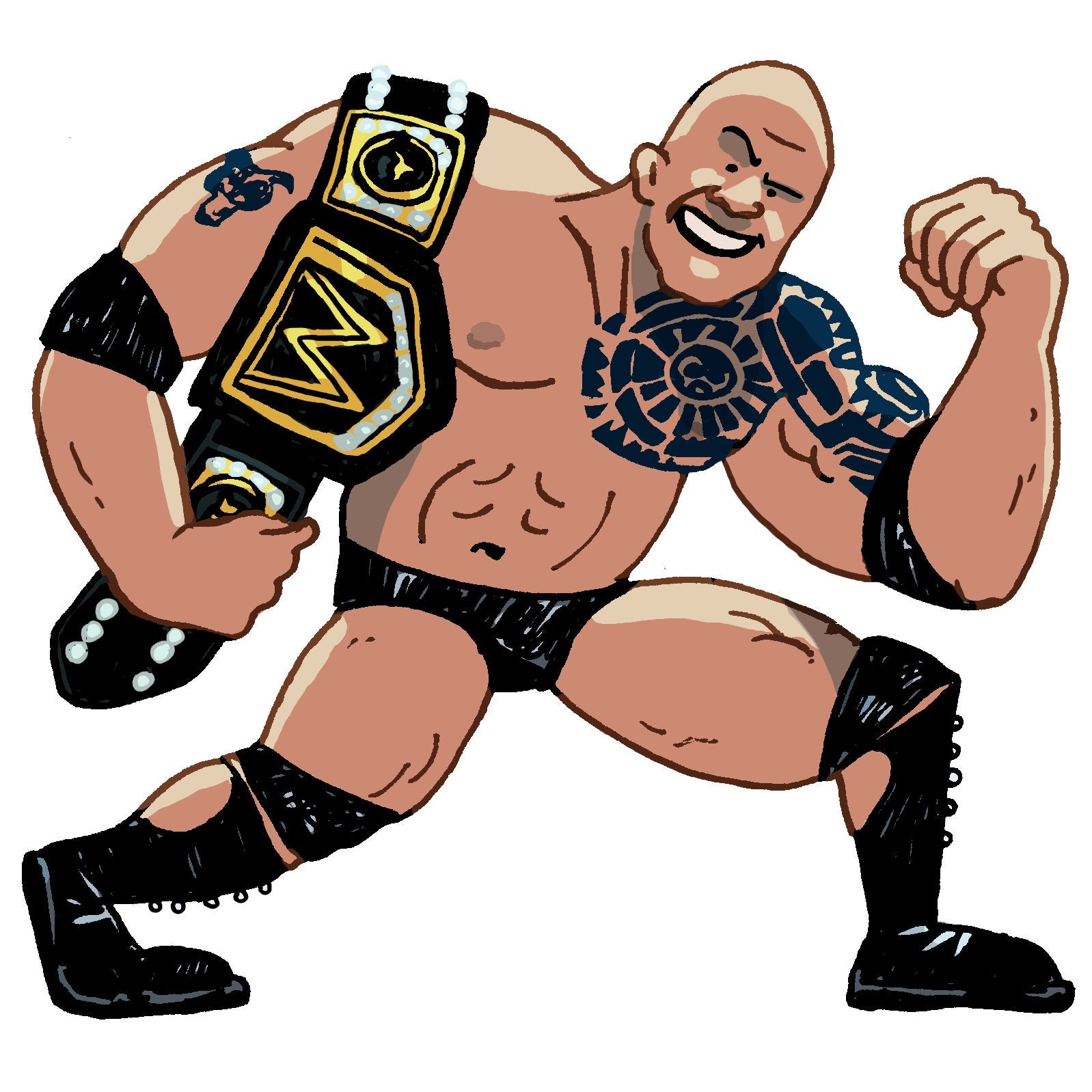
Dwayne Johnson sometimes describes the Rock, the persona that catapulted him to wrestling superstardom and a future atop Forbes’ all-time highest-paid movie stars list, as a version of himself “with the volume turned way up.” That sells his own creation a bit short. Outside the ring, Johnson exudes warmth and charm. Inside it, he was a masterful trash-talker and egomaniac who spoke in the third person, could raise his right eyebrow up to the rafters, and uncorked a catchphrase per minute. (“Do you smell what the Rock is cooking?” “It doesn’t matter what your name is!” “The Rock’s going to lay the smackdown on your candy ass!”)
The character gave a name to everything from WWE SmackDown to all those hopeless jabronis, but above all he gave Johnson a license to verbally vamp, without being too culturally specific or outright weird, the way his fellow WWE headliners were. “Stone Cold” Steve Austin was a blue-collar badass. Mankind was a deformed psychopath. By the early 2000s, the Rock was just a gamma ray of charisma, which set Johnson up to drive the People’s Elbow through the barrier that separated pro wrestling’s stars from true big-screen success. It’s a signature move that grapplers from John Cena to Dave Bautista (whom you may know as Drax) have since imitated.
—Jordan Weissmann
18. Angel Dumott Schunard, from Rent (1996)

Among the strivers and artists of Jonathan Larson’s musical, Angel alights like a fairy godmother, introduced in a whirl of sequins and platform pumps as she doles out cash and comfort without a whiff of selfishness. Flouting conventions of gender and tidings of death, she is an embodiment of the furious and defiant celebration of life embraced by the queer community in response to the AIDS crisis. On Broadway and in the 2005 film, Angel introduced the general public to the image of a gender-fluid person of color defined by their joy rather than their pain. In recent years, as more audiences and critics have rethought the question of who gets to tell trans and nonbinary stories, she has also come to represent the inadequacies of early gender politics. But while Angel may have been clumsily handled by her own creator, in the hands of generations of performers (from the original production’s Wilson Jermaine Heredia to Rent Live’s Valentina), the character is a pure expression of the strength and grace of those who thrive in their own otherness.
—Rae Binstock
17. Bridget Jones, from Bridget Jones’s Diary (1996)

Breezy, female-focused, and wildly popular (a jaw-dropping 2 million copies reported sold worldwide), Helen Fielding’s novel inspired both a genre—the much-maligned “chick lit”—and an archetype: the single young professional woman who is both messy and ambitious, empowered and insecure. We have Bridget in part to thank for Rebecca Bunch and Fleabag. A thirtysomething “singleton” in London, Bridget is a self-described feminist who also declares in her diary, “There’s nothing so unattractive to a man as strident feminism.” She counts calories and cigarettes, laments the scourge of male “emotional fuckwittage,” and is forever falling short of her goal to be skinny, sexy, and successful. She’s the original basic bitch. Not everyone thought she captured the zeitgeist: Candace Bushnell, creator of her own messy women, sniffed to the Times that Bridget’s neediness and romantic desperation were 10 years out of date. But thanks in part to an impeccably cast 2001 film adaptation, Bridget remains an icon: a character who gets a happy ending not because she masters all her flaws, but because flawed people deserve happy endings too.
—Ruth Graham
16. Omar Little, from The Wire (2002)

That Omar (Michael K. Williams) is The Wire’s greatest character has been established by countless listicles, by bracket, and even by executive order. The Robin Hood of Baltimore, he has his own theme song, his own catchphrases, and some of the best lines in television history (“You come at the king, you best not miss”). But Omar isn’t just the show’s most beloved character—he was also its most impactful. Openly gay, he revealed dimensions of black masculinity and sexuality that are vanishingly rare on screen now and were virtually unprecedented when he emerged whistling on the scene in 2002. For all that Moonlight illuminated with Chiron, it’s striking how much Omar explored first. Consider one moving scene: Omar sits on a stoop with his boyfriend. He kisses him, teases him (“Who the man, huh?”). This glimpse of casual, public same-sex affection is small yet radical: Omar subtly bucks a world that sees black men only one way—if it sees them at all.
—Brandon Tensley
15. Tracy Flick, from Election (1998)
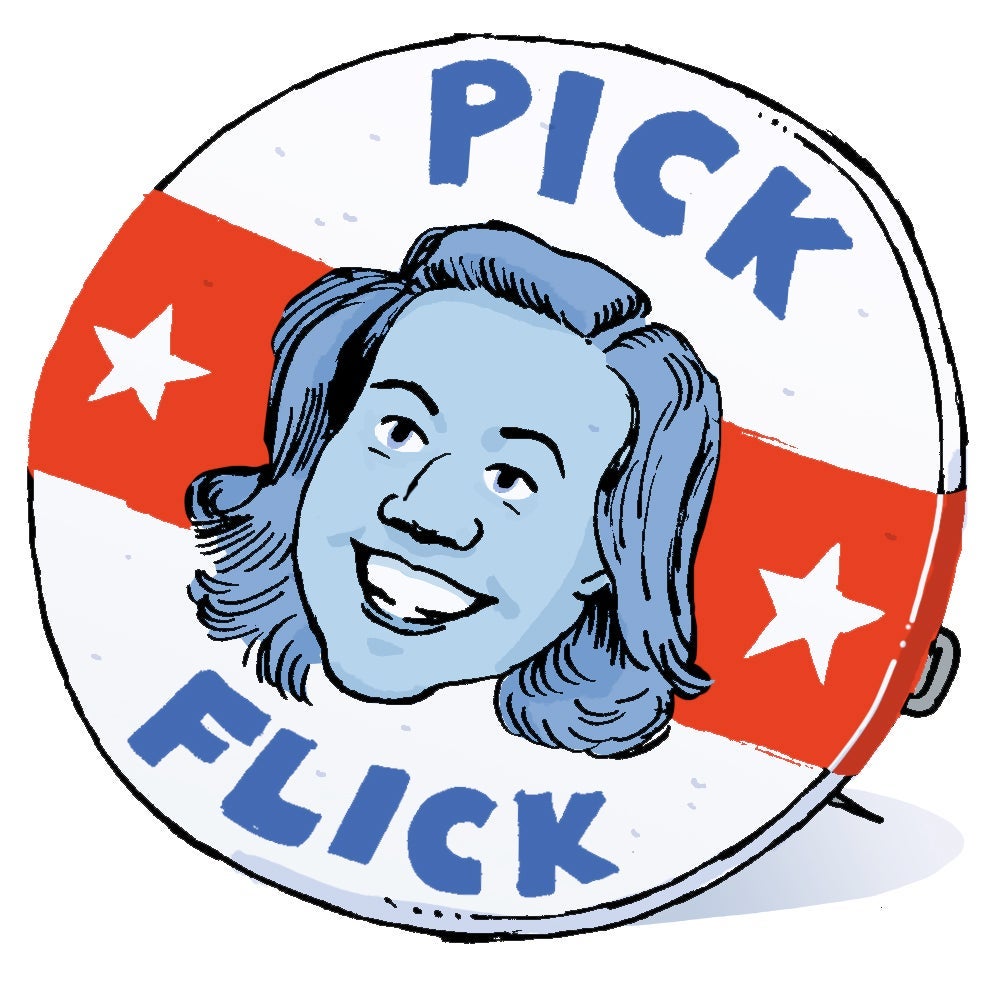
According to director Alexander Payne, Barack Obama twice named 1999’s Election as his favorite political film. Obama’s former campaign rival, Hillary Clinton, probably has a more ambivalent relationship with this Nebraska-set social satire, adapted by Payne from Tom Perrotta’s 1998 novel of the same name. During both of Clinton’s campaigns for the White House, what some perceived as her outsize ambition and Hermione-grade preparation led her to be compared often to the tightly wound and ruthlessly dedicated candidate for student body president. Reese Witherspoon, who played the high schooler with career-making ferocity, has said that when she met Clinton, the candidate told her, “Everybody talks to me about Tracy Flick in Election.” The alternately pitiable and impressive Tracy is a villain, a heroine, a comic buffoon, and a mystery. She’s one of those rare characters who goes on to lead an independent existence as a real-world archetype.
Election has been criticized for misogyny (to my mind, unfairly) because of its sometimes caustic portrait of a female character who desires, undisguisedly and at times excessively, to win. Twenty years after the movie’s release, Tracy’s brand of dogged persistence seems more like a feature than a bug.
—Dana Stevens
14. Kumar Patel, from the Harold & Kumar movies (2004)
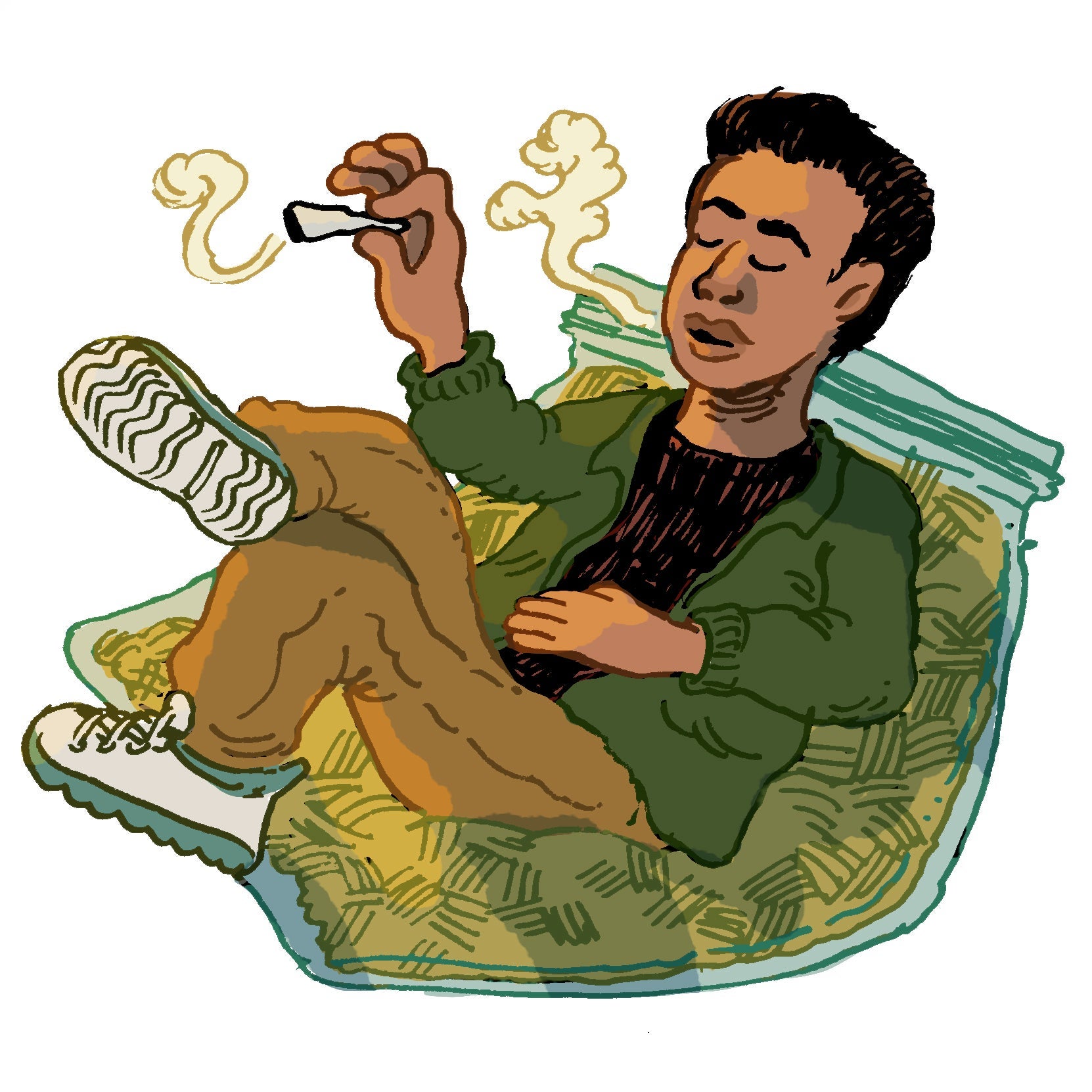
The Harold & Kumar franchise was more revolutionary than you might think. As the first major Hollywood series headed by Asian protagonists, it expanded what the archetypal cinematic stoner (Cheech and Chong, Jeff “The Dude” Lebowski) looked like, then took the role into even more bizarre directions, with characters romancing giant bags of weed and sharing joints with George W. Bush.
But it was Kumar Patel, especially, who represented a radical new vision of Asian Americans on screen, and it was precisely his lack of ambition that made him so groundbreaking. As portrayed by Kal Penn, he was a layabout by choice, a brilliant doctor-to-be without the baggage of responsibility and social ineptitude. He seemed written to deliberately subvert all the typecasting of yesteryear, rejecting comparisons to caricatures like The Simpsons’ Apu and pushing the awkward, overachieving Harold into loosening up and enjoying life. The loafing, mischief-making pothead was far from a role model, and for many of us, he meant all the more for it.
—Nitish Pahwa
13. Sadness, from Inside Out (2015)
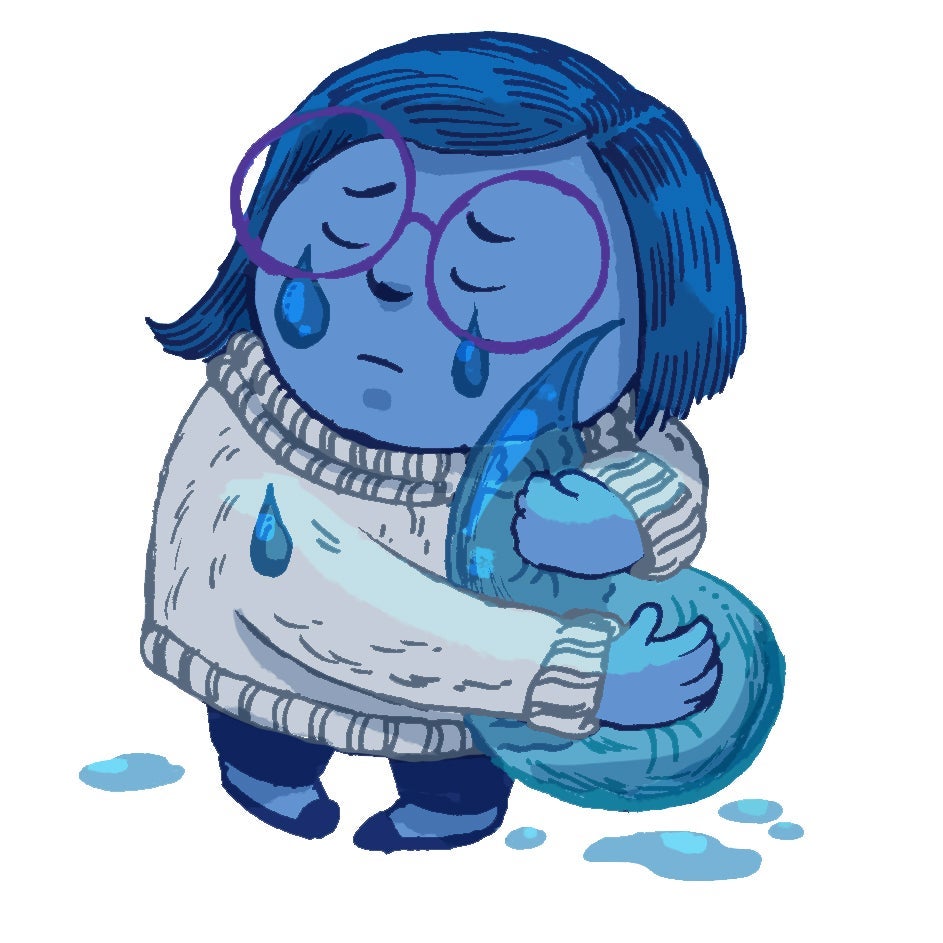
Pixar has been a dominant creative force in the past quarter-century, revolutionizing the way children’s entertainment looks and feels, beginning with Toy Story in 1995. But the company’s characters have also reflected (and influenced) the child-focused evolution of modern parenting, from the debate over exceptionalism that illuminates the Incredibles movies to the explorations of independence and disability at the center of Finding Nemo and Finding Dory. No Pixar character has taught American families more, though, than Inside Out’s Sadness, voiced by Phyllis Smith. Given Pixar’s signature knack for making audiences sniffle, this little blue blob with glasses could serve as a kind of wry company mascot, but through her noble quest to broaden teenage Riley’s emotional palette, Sadness has also helped an entire generation of kids (and parents) understand the value of mourning and the cleansing power of a good, healthy cry.
—Dan Kois
12. Olivia Pope, from Scandal (2012)

An early scene in Scandal’s run encapsulates what Olivia Pope means to so many viewers. Played by Kerry Washington, the D.C. fixer strides into a meeting room with her team, and a potential client immediately assumes that the celebrated power broker she’s there to see must be the white woman by Olivia’s side. The first black woman to lead a primetime network drama in nearly 40 years, Olivia was a vision of hypercompetence whom others underestimated at their peril. She also became one of the most influential people on earth when she helped install her on-again, off-again lover in the Oval Office—and in doing so, made Scandal the rare must-see-live series, one that almost single-handedly popularized live-tweeting.
But it’s not just the White House, and one night a week on Twitter, that Olivia seized. She made Hollywood realize all sorts of audiences could identify with a powerful black woman, paving the way for an era of increased diversity on the small screen and for creator Shonda Rhimes to announce last year that she had become the “highest-paid showrunnner in television.” The Hollywood takeover? It’s handled.
—Inkoo Kang
11. Edward Cullen, from the Twilight saga (2005)
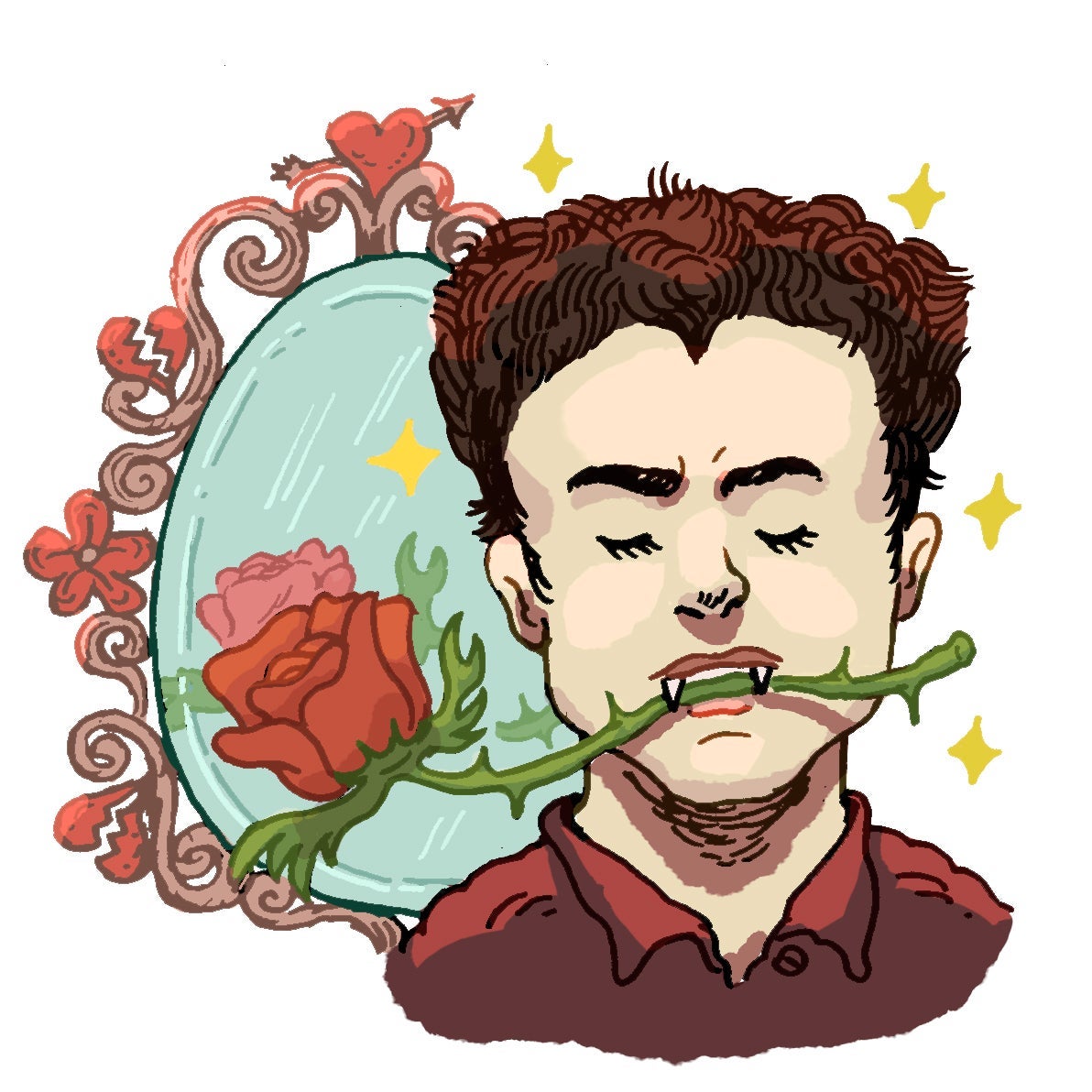
Ask any teenage girl (or older!) who devoured the Twilight series during its peak in the mid-2000s, and she’d explain that the appeal of Stephenie Meyer’s novels had nothing to do with their heroine, Bella Swan, and everything to do with her love interest. Under the guise of a vampire story, Meyer introduced a generation of young female readers to the archetypal romance novel hero: handsome, brooding, utterly devoted, protective, a bit mysterious, and rich. Edward’s transformation into the dominating hero of E.L. James’ fan fiction–based blockbuster Fifty Shades of Grey was testament to the power of fandom in the age of modern entertainment, but his reincarnation shouldn’t have been surprising; he already was Heathcliff, Mr. Darcy, Rhett Butler, and countless other, lesser fantasies of masculine strength and vulnerability conjured by women writers over the past 200 years. And a bit of a blank, too, sure. But how else could so many dreams be projected onto him?
—Laura Miller
10. Hannah Horvath, from Girls (2012)

“I think I may be the voice of my generation,” Hannah Horvath famously said in the very first episode of Girls, “or at least a voice, of a generation”—and she, and all the rest of us, were off to the races. Was she joking? Was she sincere? Was that the character, Hannah Horvath, speaking? Or a thinly veiled version of the woman who played her, Girls’ creator and controversy collector Lena Dunham?
The enmeshment of Dunham and Horvath—where did one end and the other begin?—gave the HBO series its zeitgeist-grabbing cachet, at least until exhaustion set in, but it also obscured Horvath’s identity as a new and genuinely challenging kind of antihero: the anti-charming antihero. More like Larry David than Tony Soprano, who wooed audiences despite his crimes, Hannah offended audiences despite her lack of crimes. She was less odious, objectively, but more unbearable, intentionally. Season after season, Horvath became more grotesque and noxious, an outsize fictional monster, but antipathy for Dunham created a slippage between the two, a slippage that meant Horvath could never shake her autobiographical underpinnings, no matter how far and outlandishly she moved away from them.
“People never gave us the benefit of the doubt that the show was actually a self-aware commentary on privileged white womanhood,” Dunham said. “When a guy plays an antihero, nobody’s like, ‘I think Bryan Cranston’s really promoting drug use.’ ” Dunham didn’t always help her cause—among other things, the first season often did seem like an un-self-aware commentary on privileged white womanhood—but her Hannah Horvath was a truly pioneering antihero, a lightning rod in a revealing mesh shirt, willfully charting the outer limits not of criminality, but of likability.
—Willa Paskin
9. Willow Rosenberg, from Buffy the Vampire Slayer (1997)
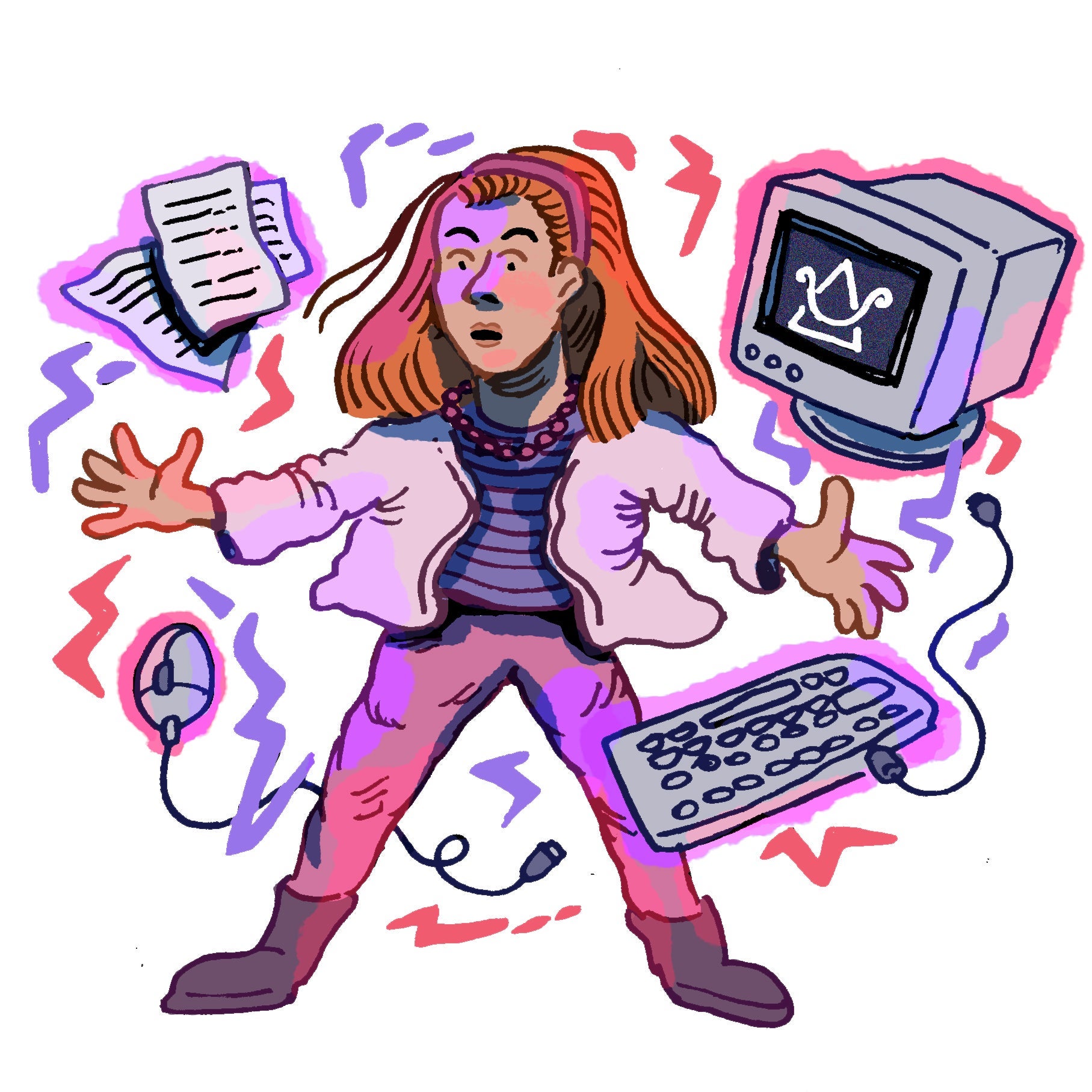
If an infallible computer ingested all of teen and nerd culture, it could not spit out a character more perfectly designed to be fiercely beloved than Willow. Imbued with a quiet, awkward charm by Alyson Hannigan, Willow grew from a nerdy teen into a self-actualized world-saving witch, emerging as the heart and moral center of the show over its eight seasons. But it’s her queer sexuality, and the way Buffy made it integral to her character but not the entirety of it, that earns Willow a place on this list.
When Willow fell for her witch friend Tara in Season 4, it was 2000—three years after Ellen DeGeneres’ goofy coming-out on Ellen and four years before The L Word gave queer women the glamorous, sexed-up soap opera treatment. Before Willow, there had been few lesbian relationships on TV, and none with the longevity or pride of place the Willow-Tara union enjoyed on Buffy. Their pairing was earnest, affectionate, careful to sidestep the voyeuristic male gaze. Audiences watched Willow’s abilities and confidence blossom as the relationship progressed, a sensitive portrayal of the liberating power of queer love and being seen as, or simply being, one’s true self.
Buffy’s depiction of Willow’s sexuality hit some familiar pitfalls: Bisexual critics lamented that Willow identified as a lesbian even though she’d had sex with men. Her maniacal “Dark Willow” turn after Tara’s death hewed to an angry lesbian trope that didn’t seem to fit the character. And it took Willow and Tara an entire year to kiss on-screen, even as the rest of the cast screwed with abandon. But Willow made up for lost time with network television’s first lesbian sex scene in Season 7—and more importantly, she set a high bar for all the even better queer love stories that followed.
—Christina Cauterucci
8. Sarah Palin, from Saturday Night Live (2008)
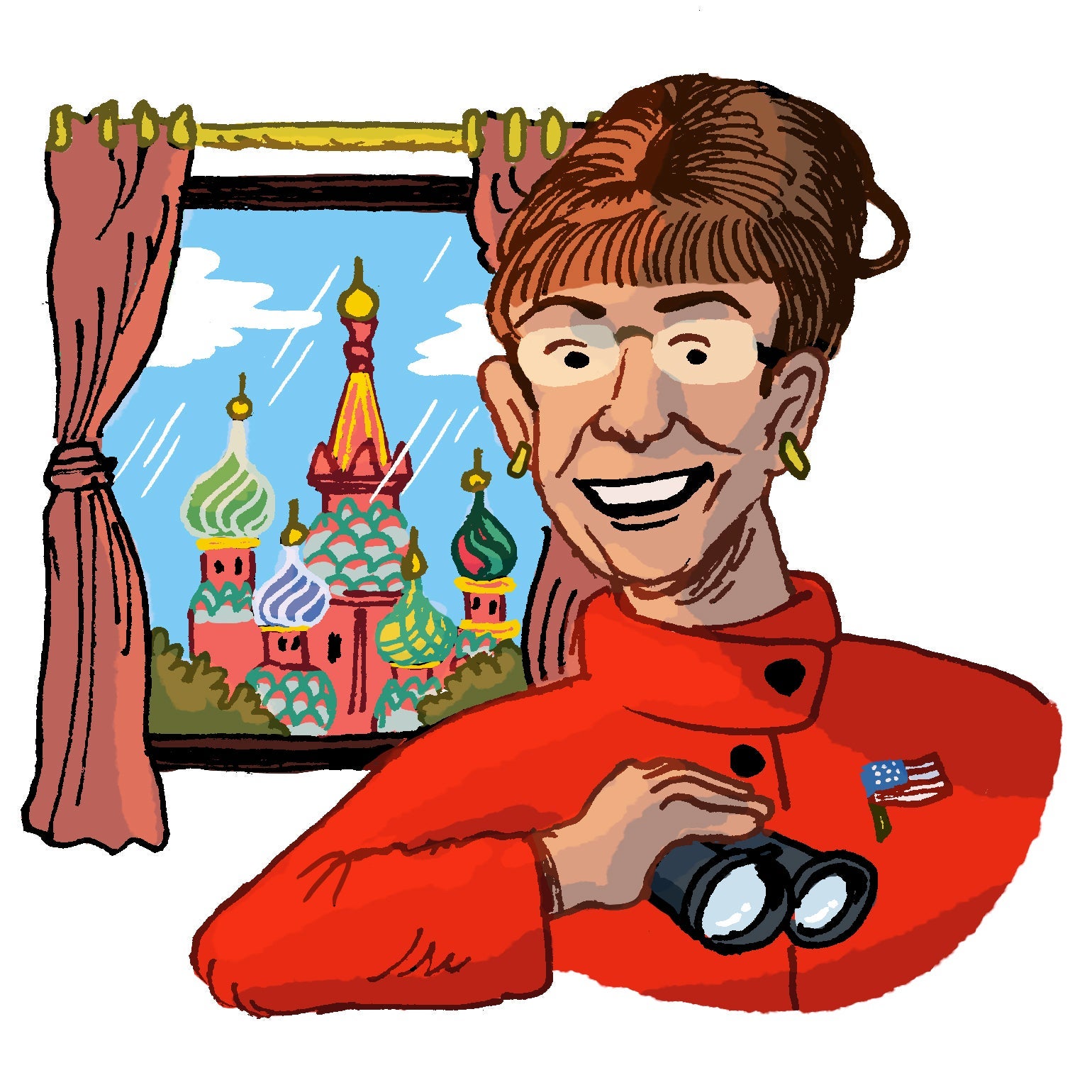
Sarah Palin never actually said “I can see Russia from my house.” The fact that the line has become indelibly associated with her, and that many otherwise well-informed people believe she said it, is a testament to how much Tina Fey’s iconic portrayal has eclipsed the actual Sarah Palin in our cultural memory.
Fey, who had left Saturday Night Live two years earlier, was brought back to play John McCain’s running mate on SNL’s 2008 season premiere after the press noted the women’s physical resemblance. Fey nailed Palin’s distinctive Midwesternish accent (“Alaskan wind song,” as she dubbed it in a David Letterman interview), her indifference to preparation and political norms, and her shameless pandering to “hockey moms” and “Joe Six-packs.” Fey continued the riff throughout the election, including in an instant classic reenactment of Palin’s infamous train-wreck interview with Katie Couric, and by the time the real-life Palin made an awkward appearance beside Fey, the actual Palin seemed less real than her counterpart.
The impersonation left a mark on more than just the bottom half of the presidential ticket. Political scientists would later argue that the “Tina Fey effect” made young Republicans and independents less likely to vote for McCain. And while Fey couldn’t stop the would-be veep from cracking open the Pandora’s box of our current nightmarish, reality-show politics, the character, too, remains influential: More than a decade later, SNL’s arms race of celebrity cameos to portray Trumpworld figures (Alec Baldwin! Matt Damon! Robert De Niro!) feels like an increasingly desperate attempt to recapture her lightning in a bottle.
—Joshua Keating
7. Miles Morales, from Ultimate Comics: Spider-Man (2011)
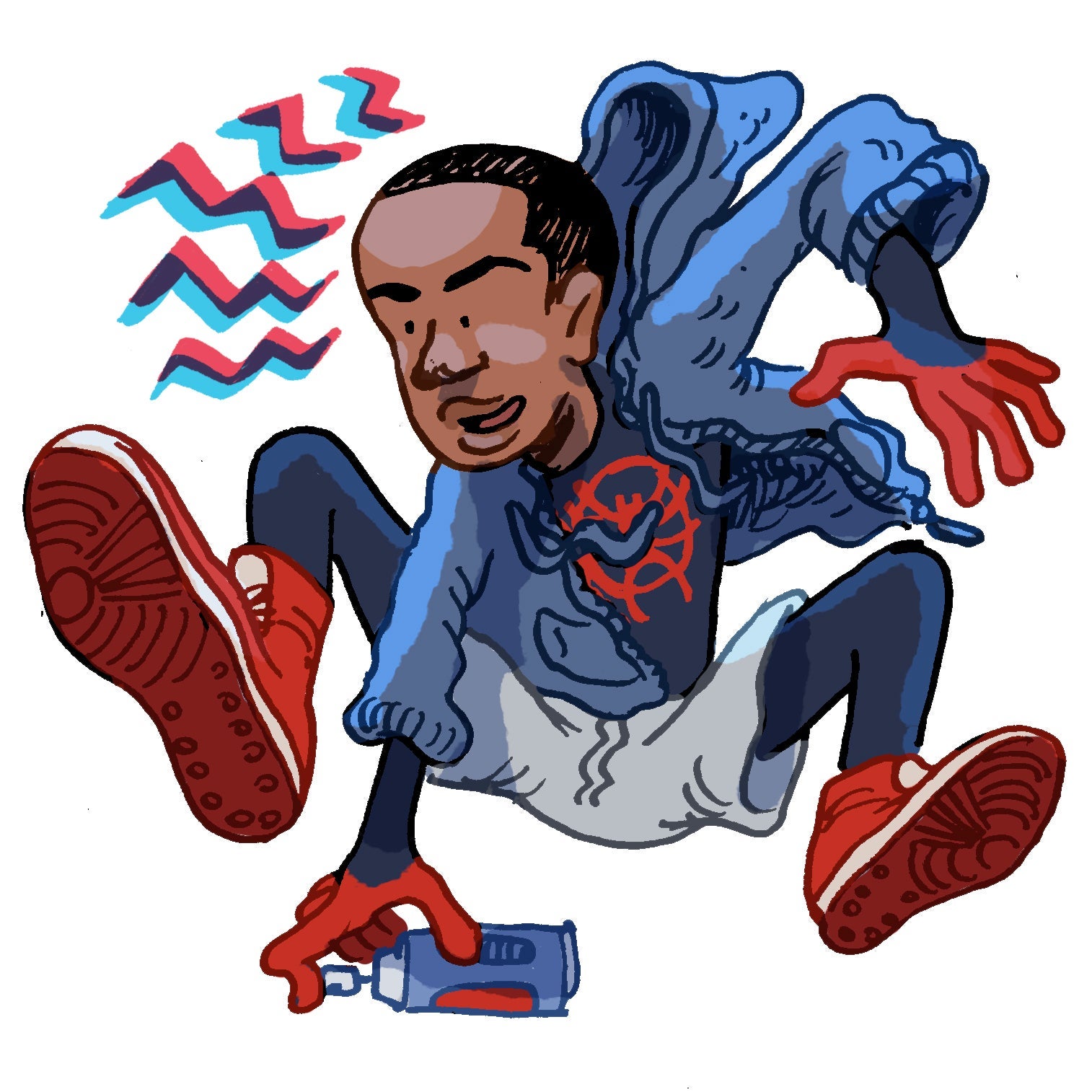
Spider-Man could be anyone under that spider-suit, but until 2011, he was only Peter Parker. The genius of that character was always that the shy, nerdy, unlikely hero was the audience proxy of the Marvel Universe: He battled among the demigods of the Avengers and saved the world from Doc Ock, then went home to fret over his chemistry final.
But not everyone could be Peter Parker, right? Even in Marvel’s popular Ultimate imprint—a group of titles set outside the main Marvel Comics universe—he was the same white kid from Queens. So eight years ago, Ultimate Spider-Man creator Brian Michael Bendis—a white writer with two adopted children who are black—killed off Parker and gave his spider-job to Miles Morales, a 13-year-old from Brooklyn with a black dad and a Puerto Rican mom. It wasn’t a stunt, and it wasn’t pandering; instead, it provided the superhero world a model for thoughtfully diversifying the stories it told for as big an audience as possible. That model has continued through comics characters like Marvel’s Ironheart—a black teenage girl who builds a suit like Iron Man’s—and now, it seems, in the ascension of Anthony Mackie’s Sam Wilson into the position of Captain America in the Marvel Cinematic Universe.
It’s likely those moves wouldn’t have happened without Miles Morales. Miles was a compelling hero (reluctant, sensitive, eventually buoyant) whose story was not an imitation of Peter Parker’s but its own vibrant self. The character developed such a passionate fan base that Marvel eventually ported him over to their main superhero universe. The big payoff was 2018’s brilliant Spider-Man: Into the Spider-Verse, a Miles-centric movie that won the Oscar for Best Animated Feature. Sure, it had Peter Parker, too—actually, three or four Peter Parkers, and a Spider-Ham—but only one heart. That Miles isn’t the only Spider-Man no longer feels like a hedge. As Miles puts it in the film, in a heartening message for the world’s dominant pop culture storytelling mode to deliver: “Anyone can wear the mask. You can wear the mask. If you didn’t know that before, I hope you do now.”
—Jonathan Fischer
6. Jar Jar Binks, from Star Wars: Episode I—The Phantom Menace (1999)
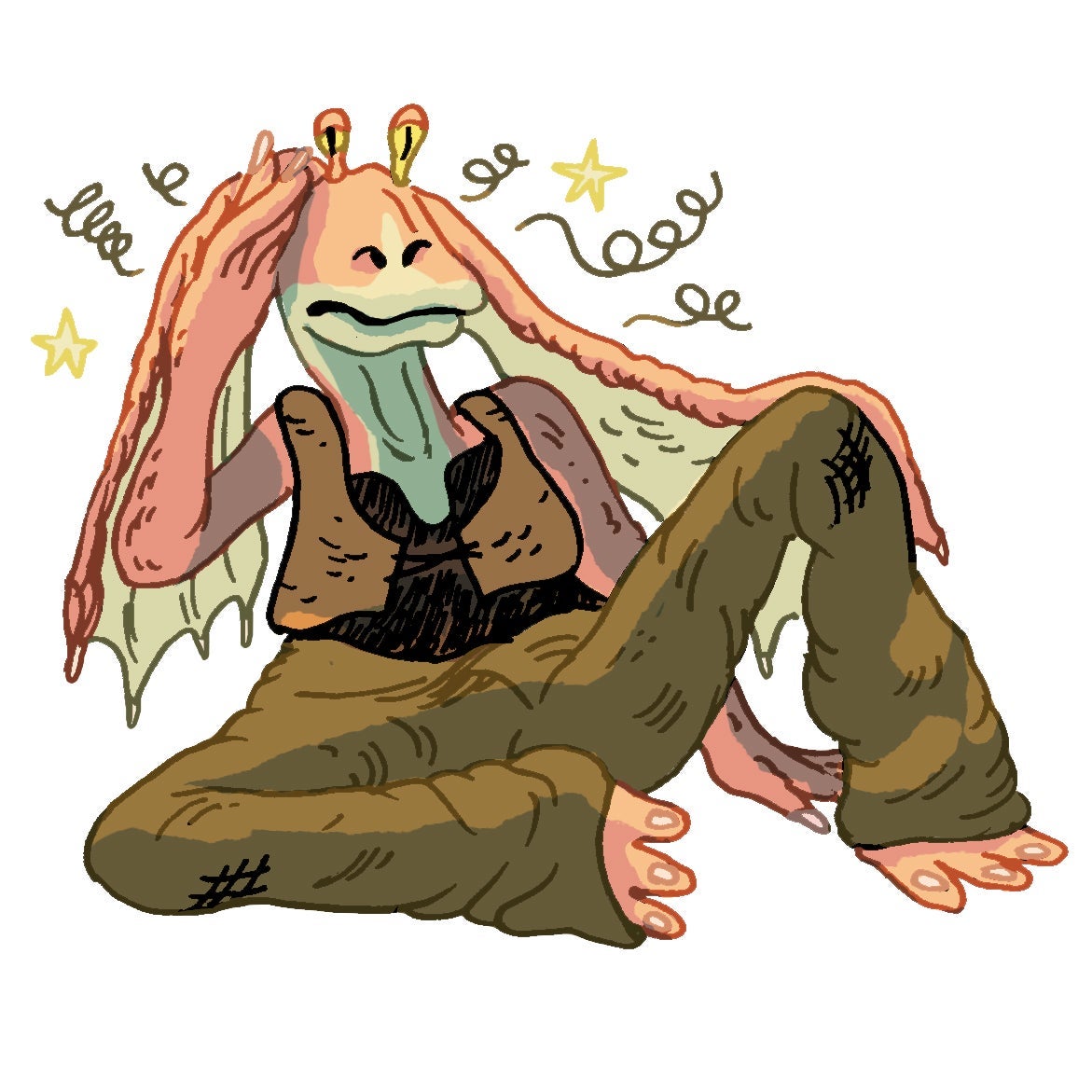
Hey, this is a list of the most important characters, not the most beloved. When Star Wars returned after 16 years with The Phantom Menace, the movie’s klutzy, floppy-eared sidekick quickly became a symbol of its flaws and a lightning rod for criticism, both legitimate (concerns about cynical commercialization, racial stereotypes, and the inadequacy of the era’s CGI to replace human performance) and overblown (gripes about its gee-whiz childish tone, something that had long been central to the series). So venomous was the hatred of Jar Jar—actor Ahmed Best received death threats and contemplated suicide—that his role was considerably reduced in subsequent movies, though the character still managed to bungle his way into enough power to enable an evil dictator’s galactic takeover.
That’s nothing compared to Jar Jar’s impact on our own galaxy. George Lucas has defiantly named him his favorite character, and fans have crafted elaborate theories in which the bumbling comic relief is a villainous mastermind, but even after 20 years, he remains the standard to which other irritating characters, from Poochie to the Minions, are held. Sure, people have been complaining about the decline of the Star Wars franchise since the rise of the Ewoks, but The Phantom Menace was released when they had an internet to complain on, and the tone of the fandom has never really recovered, with Kelly Marie Tran absorbing much of the backlash against The Last Jedi just last year. Jar Jar led to anger, anger led to hate, and we’re all still suffering for it.
—Marissa Martinelli
5. Hermione Granger, from the Harry Potter series (1997)
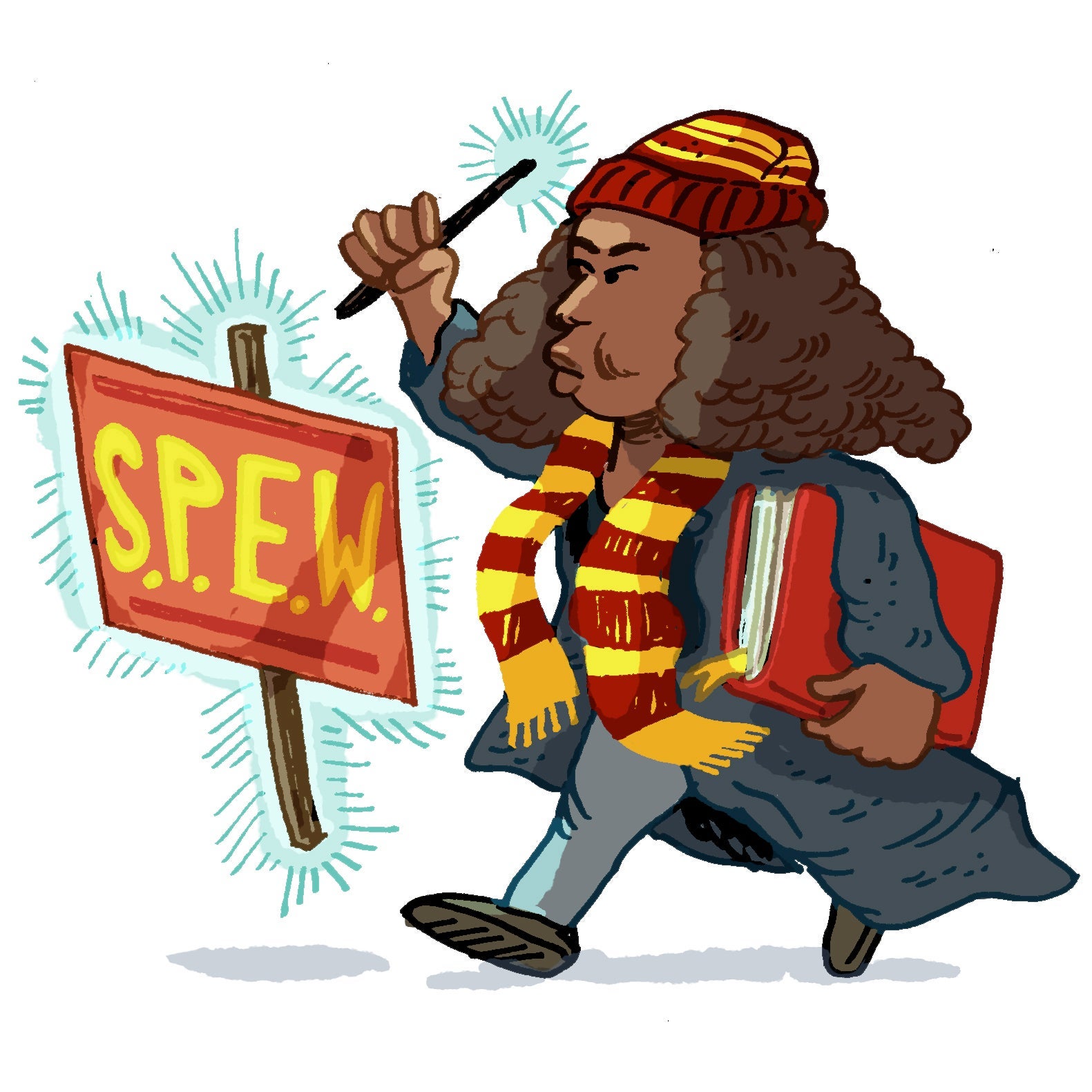
Quidditch stadiums full of Harry Potter fans have joked—sometimes in meme form—that if the books were written from Hermione’s perspective, each one would tell the story of a smart young witch saving the lives of a couple of idiots who refused to read Hogwarts: A History. They’re not far off: While Harry’s name adorned the covers, Hermione did all the work. Introduced as a bushy-haired, bucktoothed, Muggle-born know-it-all, she transformed over the series into one of J.K. Rowling’s most fully realized creations, a brainy, hardworking, bossy, big-hearted, righteous heroine for women everywhere.
In 1997, Hogwarts, too, was a boys club, where the most prominent female character bore the burden of standing in for all womankind. What’s amazing is that Hermione pulled it off. (Years later, Rowling would give the character another mantle to wear, blessing the possibility that she could be black—an opportunity seized by the megahit play Harry Potter and the Cursed Child.) Crucially, Hermione was a girl but never just “the girl,” and certainly not there merely as a love interest for the main character. (Sorry, Harry-Hermione shippers.) Harry makes for a good hero and Ron is a fine sidekick, but neither rivals Hermione as the most singularly enduring character from the most popular entertainment franchise of the past quarter-century. An inspiration to generations of bookish girls, Hermione made for a powerful proto-feminist counter to a culture awash in princesses, Barbie, and Britney. (These same readers would learn from Hermione’s Yule Ball debut that there was power in femininity, too.)
In Cursed Child, set years after the Harry Potter books, Hermione has become the actual Minister of Magic. The books never brooked the possibility that Hermione could fail in the end—so those bookish girls, now grown up, never dreamed that the same could happen to, say, a smart, hardworking female presidential candidate in the Hermione mold. WWHD? A host of conditions brought on the post-2016 rebirth of progressive activism, but don’t forget the radical SJW-before-her-time spirit of Hermione Granger.
—Heather Schwedel
4. Jay-Z, from the music of Jay-Z (1995)

It might seem odd to call a musician a “character,” but in his best work, Jay-Z has been precisely that. Since the mid-1990s, the character that Shawn Carter has crafted verse by verse has doubled as an embodiment of the American dream and a bellwether for the shifting cultural status of hip-hop, the era’s dominant musical form. In 25 years, he has gone from selling CDs out of his car to becoming a billionaire, and he has somehow managed to make this progression seem like the natural order of things, the arc nearly every other rapper seeks to follow. His 1996 debut Reasonable Doubt was a groundbreaking depiction of the psychic ravages of street hustling, cinematic in its detail and narrative ambitions. His three-volume series of follow-ups found him scaling the top of hip-hop’s commercial heap, doggedly building his myth and his empire. His 2001 masterpiece, The Blueprint, was a roadmap to adulthood for its maker and his genre.
Throughout the 21st century, his cultural footprint has only expanded, as he has turned what was once a crime drama and a Horatio Alger story into, most recently, a soap opera, co-starring and co-written by his wife, Beyoncé. Jay-Z turns 50 later this year and remains both massive and overexposed, and yet complaining about this feels a bit like yelling at the sun. No hip-hop artist has so deftly balanced a well-cultivated street authenticity—“character” work—with such a virtuosic flair for corporate capitalism. From some angles, Jay-Z feels like hip-hop’s past; from others, he still feels like its future.
—Jack Hamilton
3. Pikachu, from the Pokémon franchise (1996)
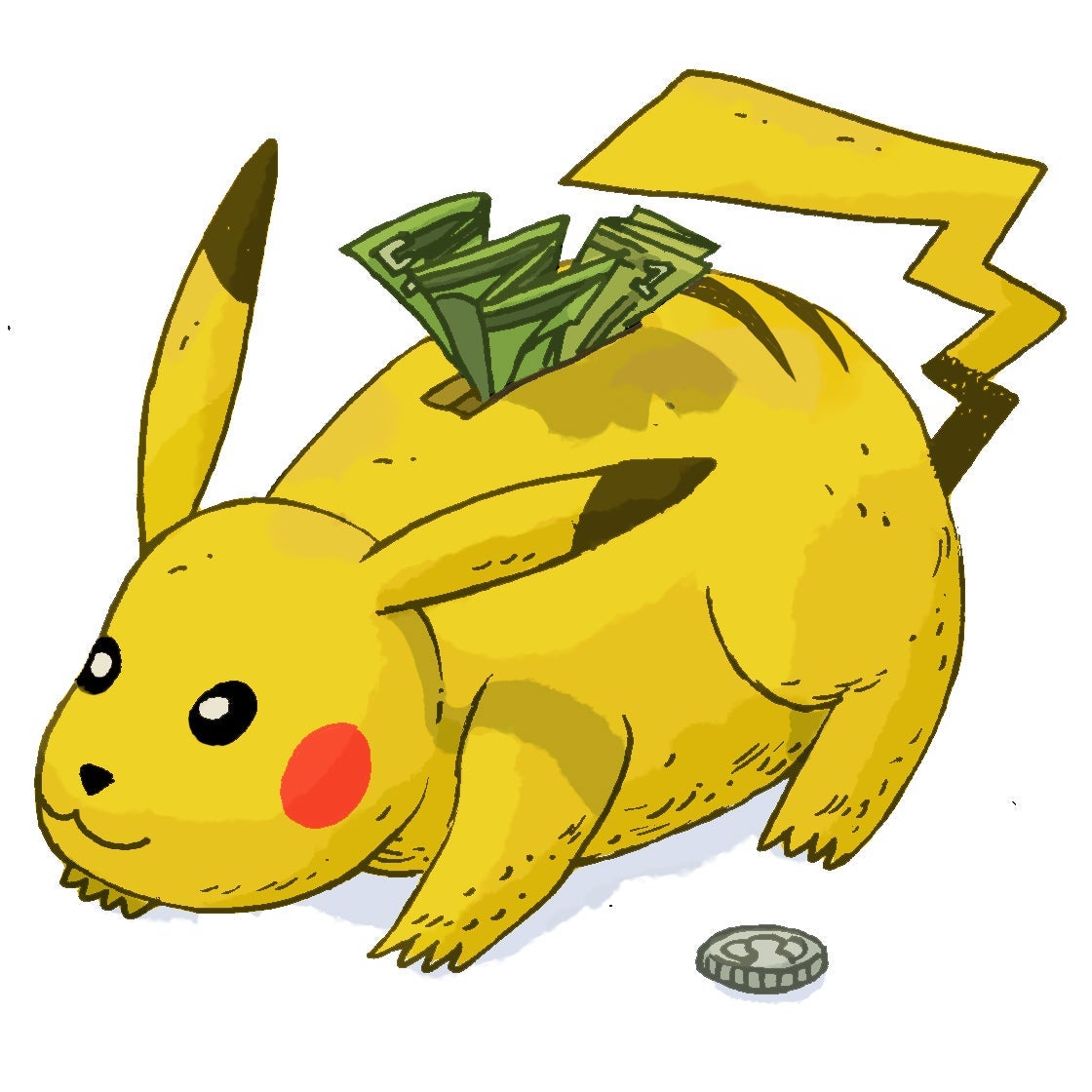
With an estimated $90 billion in total revenue, Pokémon is the largest media franchise in the world, and its universe of video games, trading cards, TV shows, movies, comics, toys, and other merchandise revolves around one electric rodent.
This is, in some ways, an accident. Pikachu looks like a character lab-grown for global conquest. With a round, pudgy silhouette, bright yellow coloring, and apple-red cheeks, he appears tailor-made for a Macy’s Thanksgiving Day balloon. But he wasn’t always the franchise’s mascot. In the original role-playing games, released in Japan in 1996, Pikachu is a relatively rare find in the game’s wilds and isn’t featured on the box art. It was the spinoff properties—particularly the anime’s characterization of Pikachu as the slightly mischievous, sweet, and surprisingly powerful companion to the show’s hero—that turned it into the franchise mascot. The anime also ingeniously instituted the trope that the titular pocket monsters mostly say their own names in place of the squeaks and grunts real animals might make, meaning that whenever Pikachu spoke, it only spoke the syllables “pika” and “chu,” reminding you with every breath the name of the character and what toys to ask your parents to buy. With more than 20 years of branding momentum, and the success of the recent Detective Pikachu film (itself the highest-grossing video game adaptation of all time), Pikachu is a kind of supercharged Mickey Mouse for our era, one who, like Mickey, is destined to be with us for decades.
Pikachu was also an ambassador not just for the world of Pokémon but for Japanese aesthetics generally. Both Japanese role-playing games and anime existed in the United States before Pokémon debuted, but the arrival of Pikachu on our shores was a generational flashpoint, a moment when Western children like myself were first exposed en masse to the Japanese design style that would go on to revolutionize the aesthetics of animation, game design, and character design and make shows like Steven Universe, Adventure Time, and Avatar: The Last Airbender commercially and aesthetically possible. He may be a mouse, but like Mickey, he casts a long shadow.
—Benjamin Frisch
2. Donald Trump, from The Apprentice (2004)
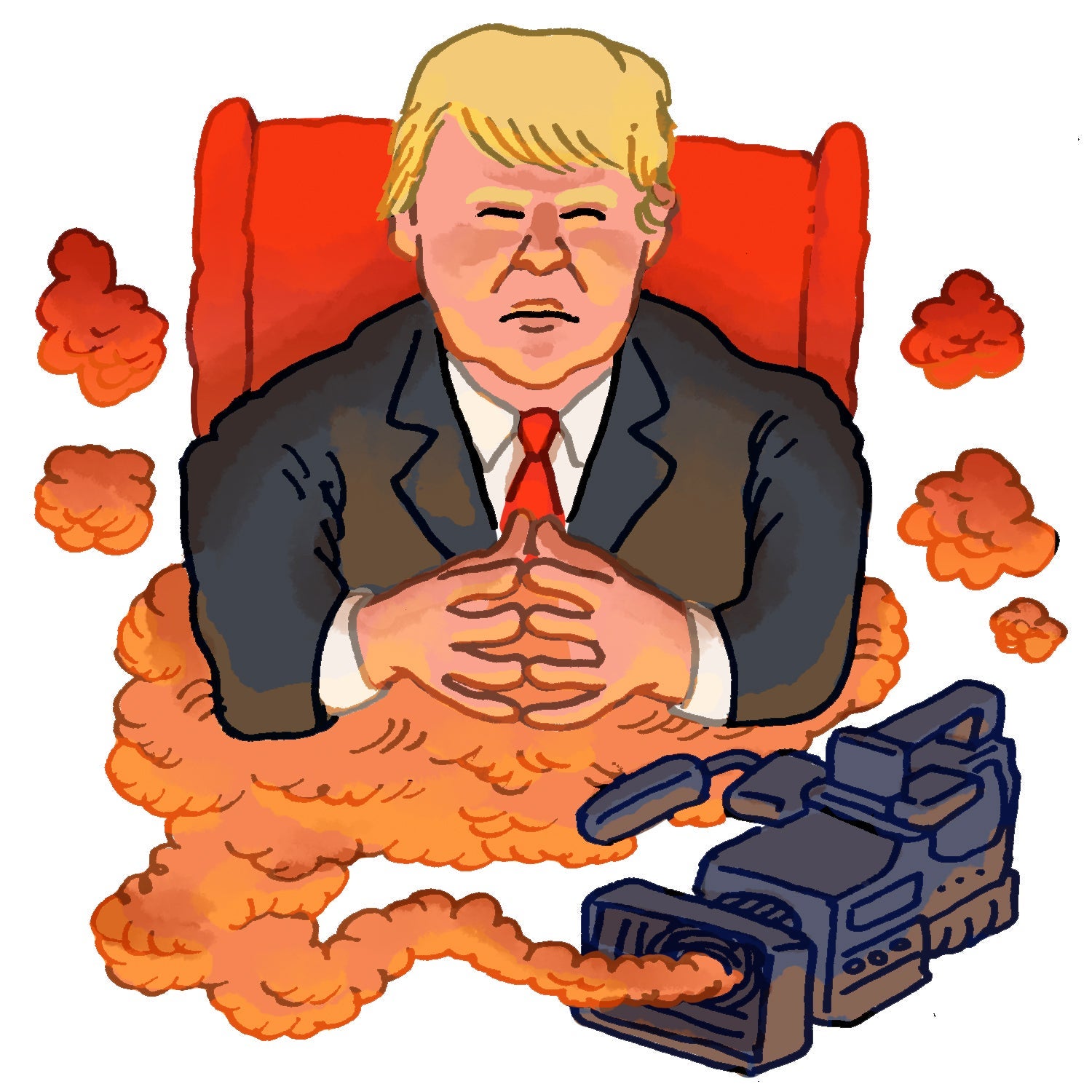
“My name is Donald Trump,” the host of The Apprentice says at the beginning of Season 3. “You know everything about me.”
Did we? Do we? Divining the “real” Trump, if there is one, may be an interesting project someday for a biographer, or St. Peter. But for most of us, the Trump who matters—the one who’s rage-tweeting, fulminating, running the world—is “Donald Trump,” the brazen character he workshopped for decades in the New York City tabloids, on talk shows, in sitcom cameos. And, most influentially, on The Apprentice.
Trump was reality TV before the genre had a name. He knew it was more important to seem like a thing than to be that thing. People would become invested in you—banks, TV producers, voters—and do the work of maintaining your illusion themselves. The Apprentice didn’t need a businessman. It needed the idea of a businessman. That was the entire point of Donald Trump.
He brought his own props. He opened the first episode in his helicopter, his name plastered on the side. He showed off his jet and his model girlfriend and his Trump Tower triplex, an orgasm of gold and crystal to outdo the love lairs of The Bachelor. As for his history—the legerdemain, the bankruptcies, his diminution into a spokesmodel for his own brand—well, details, details. He looked rich, didn’t he?
The Apprentice needed Trump to be credible so the show would be credible. It built him a “boardroom” based on Ned Beatty’s corporate lair in Network. It imposed logic on his capricious firing decisions in the editing room. It punched up the rough draft he created, with better production values.
TV’s Mr. Trump—it was always “Mr. Trump”—was decisive. He was feared, his approval craved. He was saucy and shrewd and glamorous and generous. He was a serious businessman. But he was fun! “Where else do you get a good time like with Trump?” he asked a female lawyer whom he’d just introduced to America with “There’s Miss Universe, right there!” He was shot gliding imperiously down gleaming escalators, the same way he would one day announce his campaign at Trump Tower.
As his catchphrase, “You’re fired!”, became a hit—this was the era of nasty Simon Cowell and antiheroes like Tony Soprano—Trump dialed it up, grew meaner, grumpier. On red carpets, he’d wheel, grimace, and shoot finger guns at the cameras: You’re fired you’re fired you’re fired. Eventually, the sensation cooled; eventually, he was playing a parodic reprise of his act with Piers Morgan and Gene Simmons.
But the beautiful thing about the character was that it was portable, malleable, adaptable to the times. As his ratings declined on NBC, he became a regular guest on another network, whose audience would embrace a flashy, mouthy businessman “getting real.” In 2010, he recorded a promo for them: “I’m Donald Trump, and you’re watching Fox & Friends. And if you turn the channel—you’re fired!”
—James Poniewozik, author of the forthcoming Audience of One: Donald Trump, Television, and the Fracturing of America
1. Carmela Soprano, from The Sopranos (1999)
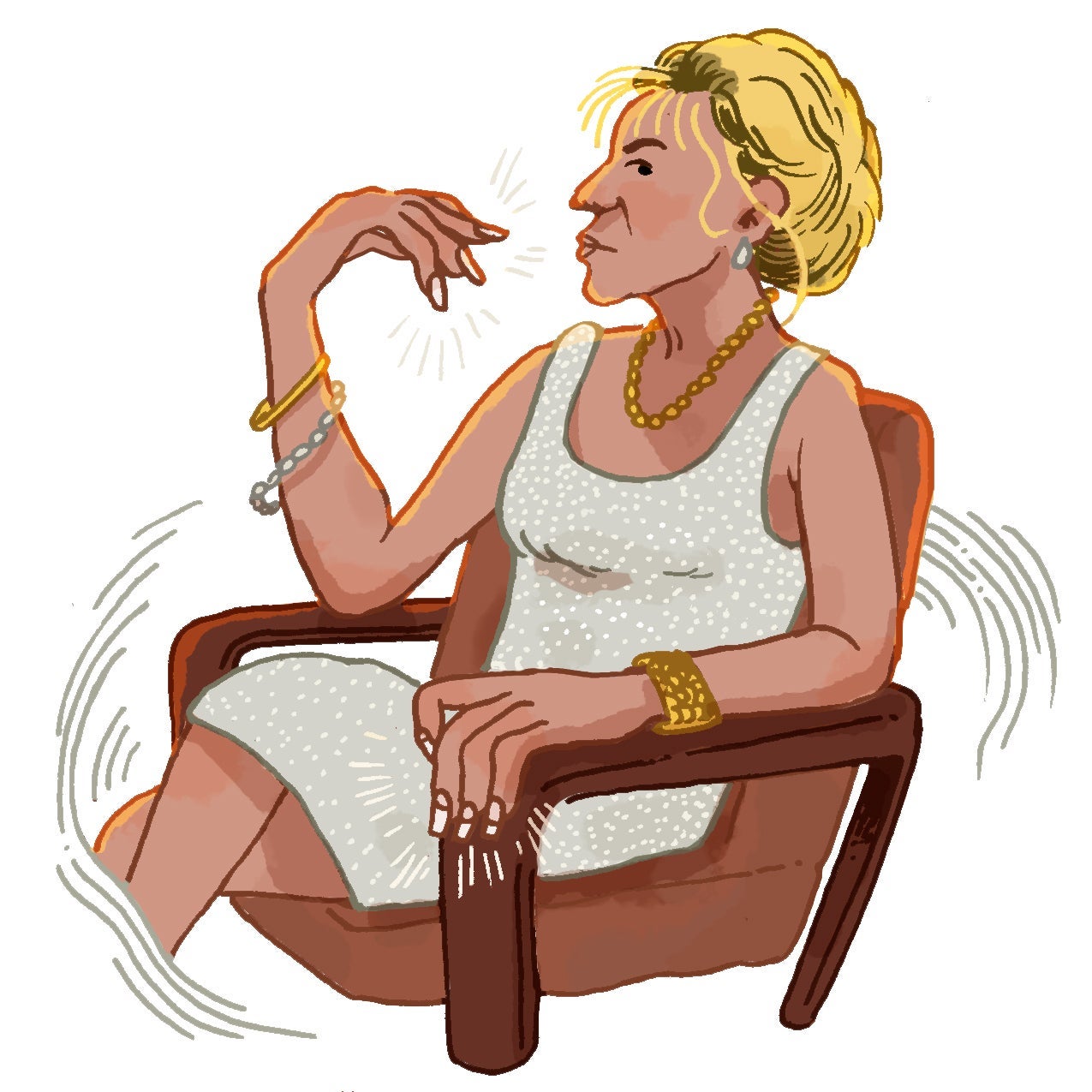
It is now a trope of a certain kind of prestige TV that there will be a complex antihero, and he will have a blonde wife whose character arc is structured around whether or not she is going to put up with his shit. There is Skyler White; there is Betty Draper; there is now, more or less, Kim Wexler—characters shaped by their relation to a man’s misdeeds, and by their own latent appetites for related misdeeds. But behind them looms the godmother of blonde wives: Carmela Soprano, the immaculate, the consummate, the eternal blonde wife—one of the finest performances in history applied to one of the best characters ever conceived.
Women in the world of the Sopranos have a tough lot. We are accustomed to seeing their nude bodies swaying lacklusterly on the stage at the Bada Bing, to seeing them at the receiving ends of rape, slaps, vicious beatings, assassinations (although some of these, of course, are the men’s lot too). Tony’s roving eye, the men’s explicit commentary, the camerawork itself make us complicit in the casual appraisals of the women in the show, and the audience is forgiven, to a point, for seeing the women in the terms the show’s world has set—Dr. Melfi’s legs, Adriana La Cerva’s ass. The women of the show assert their power from subject positions, and the actuarial problems of the family business become clear in the fates of Angie Bonpensiero, giving out samples at the grocery store when her husband first dies; or Ginny Sacramoni, whose husband’s incarceration leaves her homeless; or, most painfully, Adriana, whose trusting nature and need for a friend gets her whacked.
And then there is Carmela, who presides, more or less serenely, above them all. The totality with which Edie Falco embodies Carmela is, of course, in part due to stellar hair and makeup, wardrobe and nails, a presentation that evidently took hours to put together each day. But Falco as an actor brings a magnificent physicality to the role—exuding at one moment the prideful carriage of a woman securely established at a high position in the pecking order, or the I’d like to speak to a manager carriage of a woman unhealthily invested in her children’s college admissions, or the sudden frailty of a woman who sees that all she has is tied to a philandering man who is statistically likely to meet a sudden end. She wields her flawless acrylics to hang lasagna noodles over the side of the pot, to present a meaningful ricotta pie with pineapple, to turn the pages of the real estate license handbook, to stroke a Baume & Mercier watch, to scrabble through a bag of birdseed in pursuit of $40,000 cash.
Even when Carmela’s taste is not your taste, there is so much aesthetic unity to her outfits, to her decorating, to her presentation, even to her relationships with her husband and children, that she becomes a figure of admiration. Carmela brings a huge amount of authority and dignity to her role as homemaker and head wife: In a time of crisis, she knows just what to say, and will assign you a date to bring the ziti to the bereaved. But her life is one great moral quagmire, and Falco brilliantly delineates the series of moments where Carmela makes the choice to fully lean in, as it were, to mob life.
And so the character of Carmela beautifully puts forth the paradoxes of history as expressed in the present moment, when so many of us—the audiences for our era’s prestige television series, blockbuster movies, fantasy franchises, iconic tweets—consider, yet fail to truly reckon with, the weight of our own complicity in the evils of the world outside fiction. How does someone devoted to her family dismiss the fates of other families? How does someone who espouses the virtues of democracy ruthlessly apply her privilege for the benefit of her children? How does someone who reveres religious principles profit from the suffering of others? Carmela Soprano shows us how it’s done, and without breaking one single, perfect nail.
—Lydia Kiesling